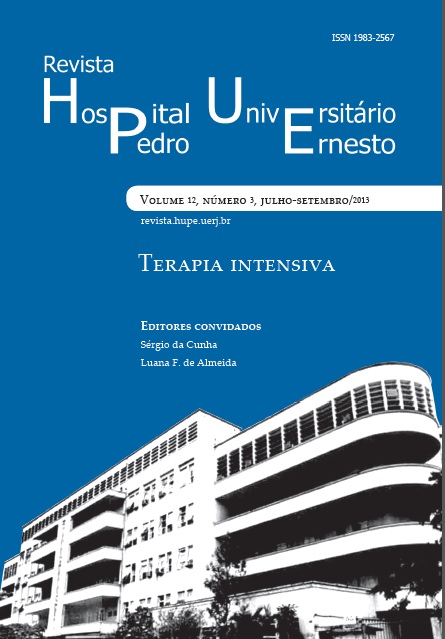Microcirculation in sepsis: pathophysiological and diagnostic features
DOI:
https://doi.org/10.12957/rhupe.2013.7527Abstract
Due to its high incidence, morbidity, mortality and cost to the healthcare system, sepsis stands out among the many indications for intensive care unit admission. The microcirculatory dysfunction plays a central role in the genesis and maintenance of the septic syndrome, being a pathophysiologic milestone in this syndrome. In fact, one can say that sepsis is a disorder of the microcirculation being the first organ to fail during the progression of sepsis to the multiple organ dysfunction syndrome and death. It is now known that, despite adequate treatment of macro-hemodynamics, there is little correlation between the improvement in systemic hemodynamics and the correction of microcirculatory abnormalities, being the presence of these abnormalities more common among non survivors than in survivors. The reason for this disparity between the macro and micro‑hemodynamics is the presence of functional shunts in the microcirculation that “hide” the microcirculatory dysfunction from the systemic circulation. By not assessing the intrinsic events that occur in the microcirculation, conventional hemodynamic monitoring systems available in clinical practice fail to detect such abnormalities and response to treatments. This knowledge points to a great need in the diagnosis and treatment of sepsis: the diagnostic evaluation of the microcirculatory dysfunction. Fortunately, there are some diagnostic methods specifically targeted for the evaluation of the microcirculatory alterations. These methods can be divided into biomarkers, videomicroscopy techniques, techniques for assessment of the tissue oxygenation and techniques for evaluation of the microcirculation using the partial pressure of carbon dioxide. Aiming at a better understanding of the pathophysiological processes involved in the sepsis’s microcirculatory dysfunction, and of the currently available diagnostic tools, some fundamental concepts are presented.Downloads
Published
2013-09-30
Issue
Section
Artigos


